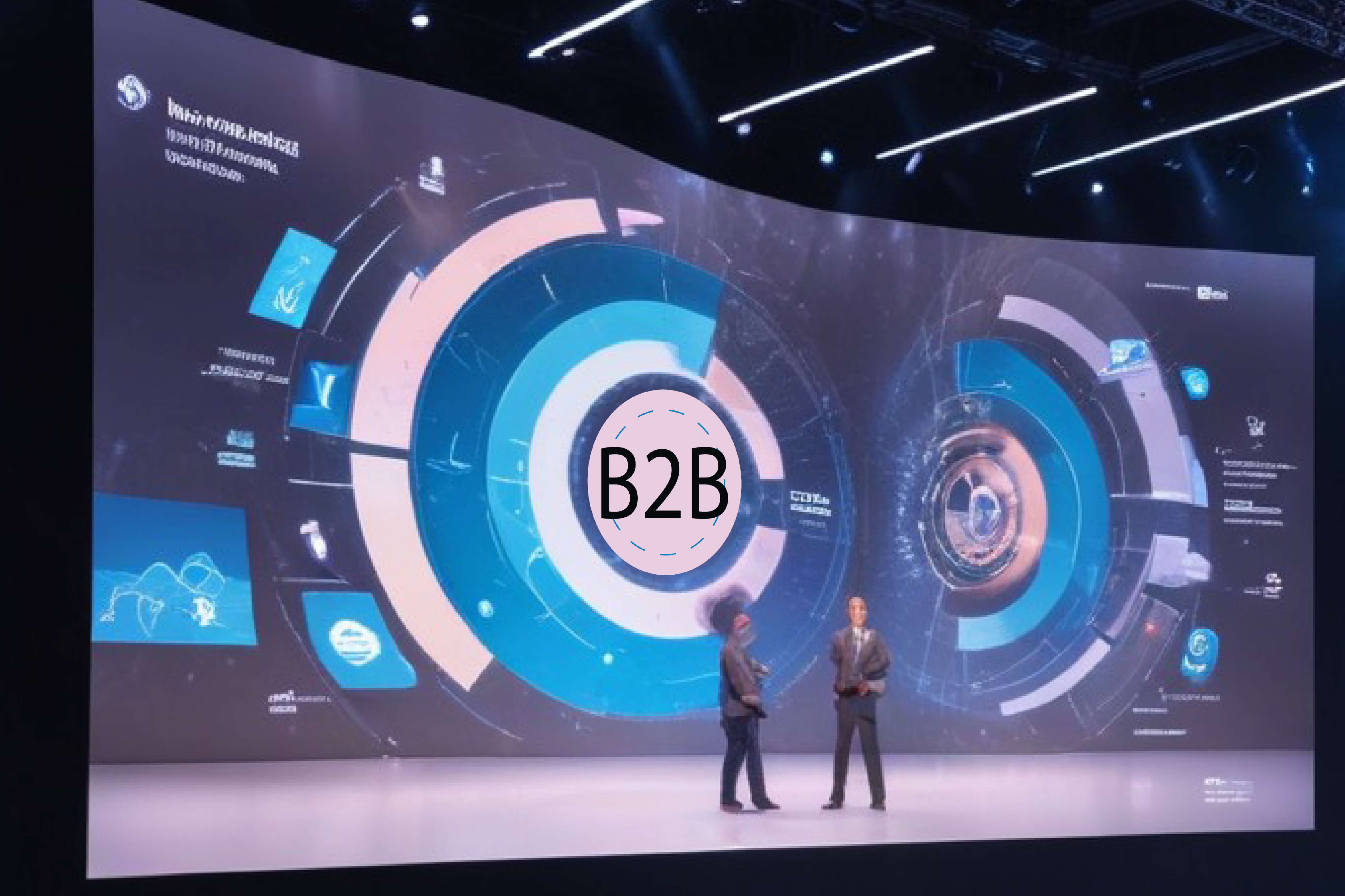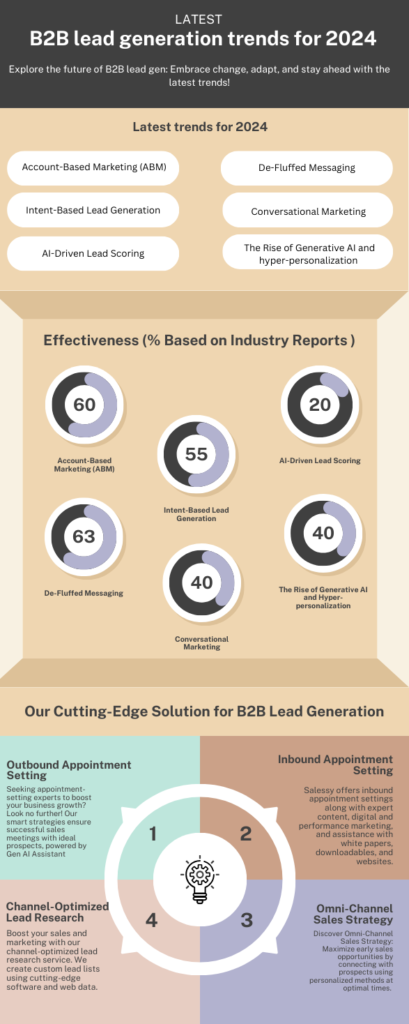Emerging Trends in B2B Lead Generation: What to Expect

Emerging Trends in B2B Lead Generation: What to Expect
Welcome to the ever-changing world of B2B lead generation! Here, the only constant is change. Imagine a marketplace where conventional strategies take a backseat to dynamic, evolving ones that push the boundaries of what’s possible. To stay ahead of the competition, you need a B2B marketing strategy that requires continuous review and updating of lead generation strategies. Business leaders, marketers, and sales professionals must stay at the forefront of these changes. Buckle up as we explore the latest trends that’ll transform your strategy and land you high-quality leads.
Let’s delve into the most current B2B lead generation trends for 2024.

1. Account-Based Marketing (ABM):
- Use tools such as LinkedIn Sales Navigator to identify your Marketing Qualified Accounts or high-value accounts.
- Adapt marketing initiatives to their particular needs.
- Ensure the marketing and sales departments work closely together.
- Terminus: Identifies target accounts and personalizes outreach efforts.
- Demandbase: Provides data and insights on target accounts.
- MadKudu: Automates ABM workflows and tracks campaign performance.
2. Intent-Based Lead Generation:
The transition to Intent-based Lead Generation is another significant change we’re seeing in 2024. It focuses on identifying and interacting with leads who are actively showing signs that they’re ready to buy, thereby increasing the chances of making a sale.
Understanding Intent Signals:
Knowing buyer intent is as important. By analyzing user behavior and signals, you can develop your approach to meet their needs more efficiently. These signals can include:
- Visiting particular web pages frequently
- Downloading whitepapers
- Interacting on a business’s social media accounts actively
- Consuming industry-related content online
By collecting the data on these behaviors and analyzing them, marketers can target each lead with the most relevant messaging at the right moment in the right place.
Case Study of Engaging Active Researchers on Social Media:
- Company: Marketing automation platform.
- Intent Signal: Engaged with social media posts discussing marketing automation best practices and followed relevant industry hashtags.
Action: Targeted social media ads with a short video on common marketing automation challenges and how their platform solves them. They also joined the conversation on relevant hashtags, offering helpful insights and showcasing their expertise.
3. AI-Driven Lead Scoring:
Tools include:
- Salesforce Einstein: Scores leads based on their likelihood to convert.
- Marketo Lead Scoring: Analyzes lead behavior and assigns scores based on their sales-readiness.
- Zoho CRM Zia: Provides insights into lead behavior and predicts conversion probability.
4. De-Fluffed Messaging:
How to prioritize Quality over Fluff in your B2B marketing strategy:
- Know Your Audience: Understand their needs and interests.
- Focus on Key Messages: Share the most important information that adds value to your audience.
- Be Clear and Concise: Use simple language and avoid jargon to make your message easy to understand.
- Use Data and Evidence: Support your points with facts, statistics, and real-life examples.
- Seek Feedback: Use simple words and avoid jargon to make your message easy to understand.
- Stay Consistent: Maintain a consistent tone and style across communications.
5. Conversational Marketing:
Tools include:
- Drift: Creates personalized chat experiences for website visitors.
- ManyChat: Builds chatbots for Facebook Messenger and other messaging platforms.
- Intercom: Provides live chat, email, and messenger support for businesses.
6. The Rise of Generative AI and hyper-personalization:
As AI technology keeps evolving, we can look forward to even more transformative changes in B2B lead generation. Future trends may include:
- Enhanced chatbots that can handle complex conversations.
- AI predicts customer churn and suggests ways to win them back.
- Integration of AI with CRM and marketing automation tools to optimize marketing strategies.
Conclusion:
Think about account-based marketing (ABM). It is all about building personal connections with the client. Or consider intent-based lead generation, which focuses on leads with buying intentions. AI-driven lead scoring helps you focus on the best prospects, while clear and simple messaging helps your voice cut through the noise. Conversational marketing adds a friendly, humanized touch, while GenAI and hyper-personalization open up exciting possibilities. Business lead generation companies are constantly innovating to embrace these trends in their services.
So, get ready to adapt and explore these trends. The future of B2B lead generation is here, and it’s full of exciting possibilities.






